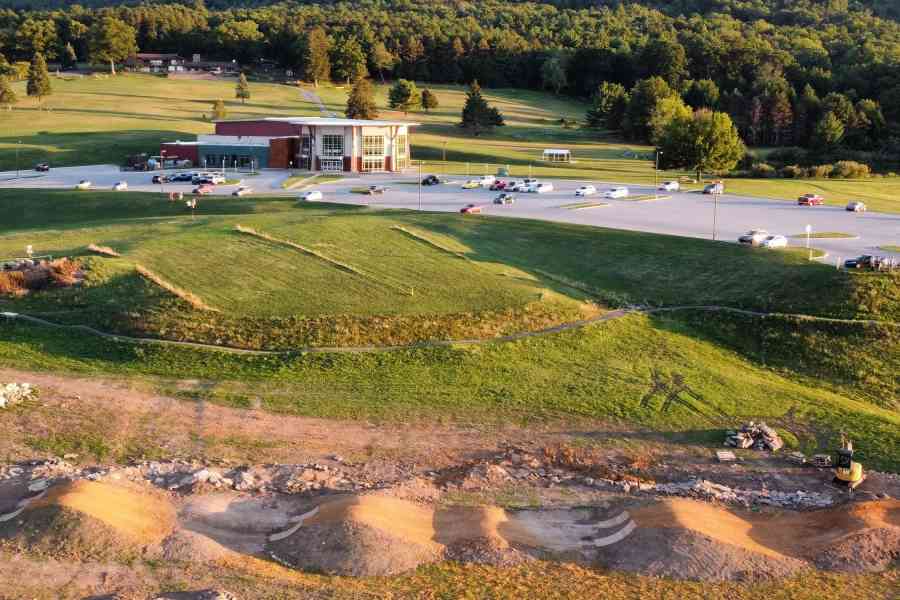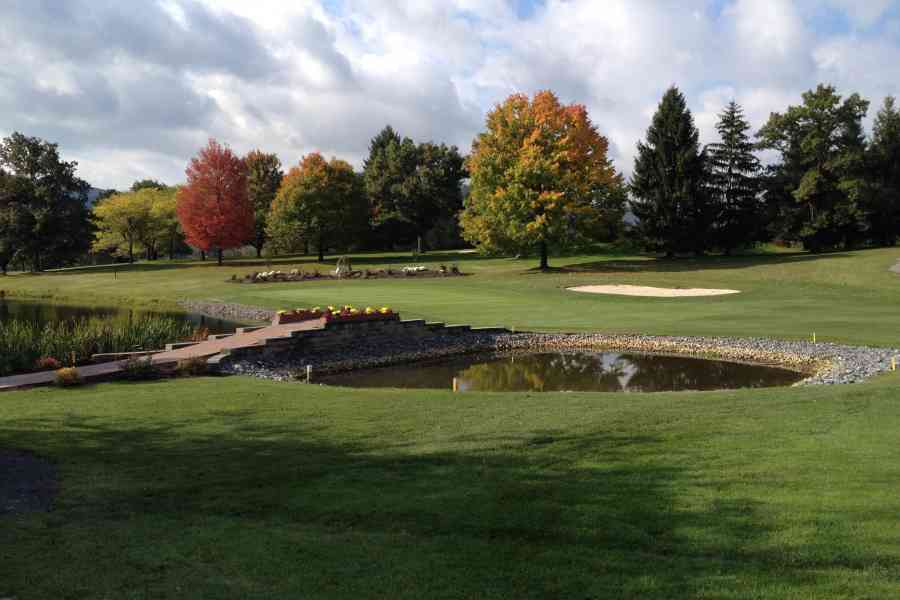The Bog Trail – Black Moshannon State Park
Happy Valley Pennsylvania is full of special places. Some are man-made, some are natural, and some are a combination of the two. The Bog Trail at Black Moshannon State Park – one of my favorite places – falls into the latter category.

The boardwalk takes visitors through the bog habitat.
The 3,394-acre Black Moshannon State Park is centered around a unique shallow lake/bog ecosystem. The easiest way to explore the bog environment is to take the short and totally accessible Bog Trail. It is one of Centre County’s special places.
The Bog Trail is easy to locate from West Side Road at Boat Launch 3. There is ample parking near the trailhead, as well as special handicap parking. Getting a free park map at the office along Beaver Road before you set out is always helpful.

The bog at Black Moshannon as seen from the Bog Trail.
The shaded trail begins at the parking lot as a newly-refurbished fine gravel path that winds through a dark hemlock forest towards the lake. At the lake, the canopy opens and the trail becomes a boardwalk through a quarter-mile section of lakeside bog.
The boardwalk includes several widened spots so that two wheelchairs could pass, as well as a viewing platform that extends out into the lake. Along the way, you will find eight informational signs that explain the importance of sphagnum, why some plants are carnivorous, migrating waterfowl and other relevant concepts.
A bog is an acidic wetland harboring plants that grow nowhere else. The acid might come from different sources, but in this case, it comes from tannins produced by sphagnum moss, also known as peat moss. The tannins make the water acidic and stain it dark, which is where the “black” part of Black Moshannon comes from.
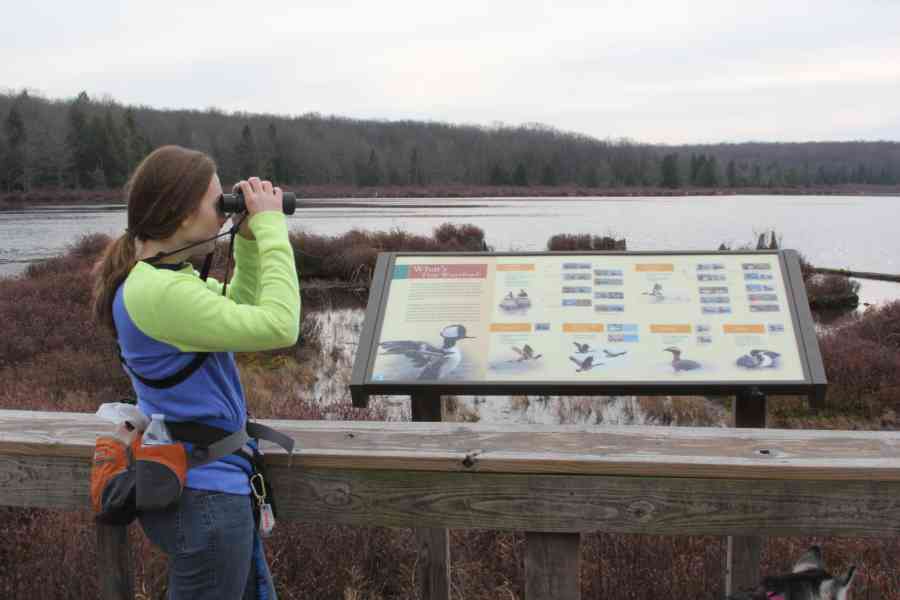
The Bog Trail is a popular spot for birding.
- Photo taken by Mark Nale
What to look for:
Among the tree species, you will see white pine, hemlock, birch, red maple and red oak as you walk along the trail. Shrubs include leatherleaf viburnum, buttonbush, swamp rose, rhododendron and a lot of highbush blueberry. Several species of ferns grow along the trail – including cinnamon fern – with its orange spore cases on a spiky stem. You will also see sphagnum and skunk cabbage. '
Special bog plants include carnivorous pitcher plants and sundews – plants that capture and eat insects to supplement minerals missing from the bog environment. Bladderwort – another carnivorous plant that lives under the water – can also be found.
Feathered friends – I identified 35 species of birds during my two most recent visits (late May and early July) to the Bog Trail. These included a veery, swamp sparrows, an alder flycatcher and nine species of warblers. Because of the bog’s unique habitat, it is not uncommon to spot species usually found to the north, such as Canada warblers and red-breasted nuthatches. I have also observed ospreys and eagles from the boardwalk, but none appeared during my most recent visits.
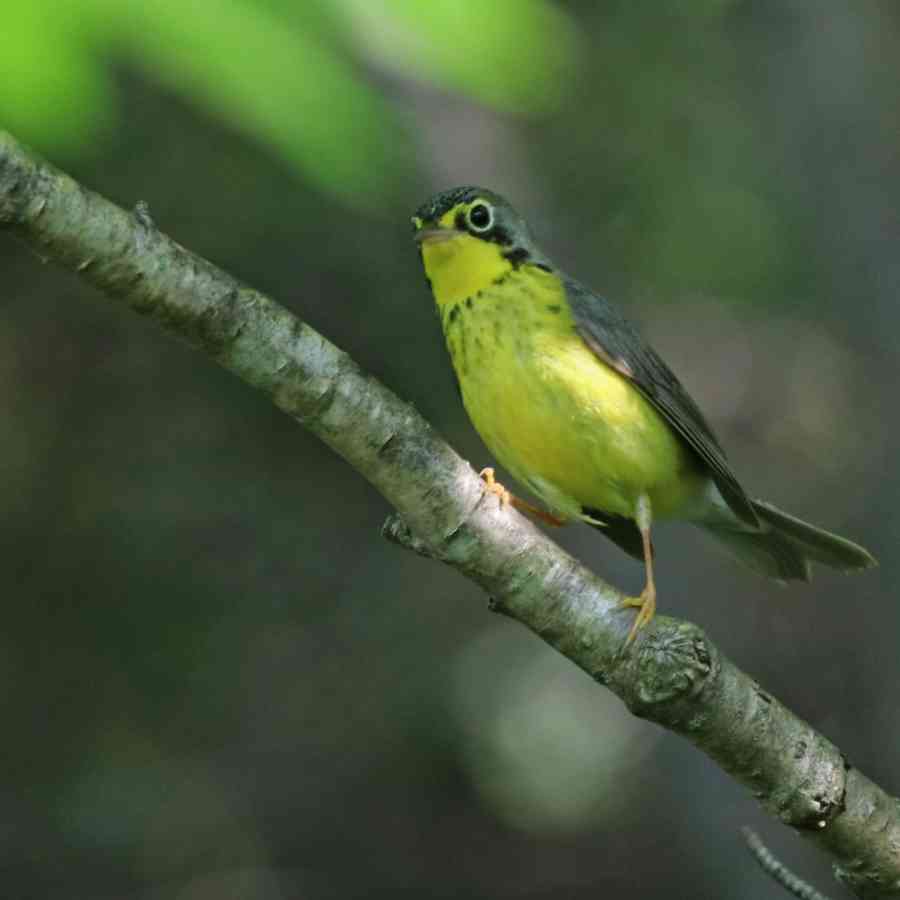
Several birds more commonly found to the north call Black Moshannon State Park home. This Canada warbler photo was taken along the Bog Trail.
You might spot wood ducks, mallards or Canada geese on any summer visit, but come back during spring or fall migration and you could spot any waterfowl species found in the eastern U.S. – pintails, mergansers, blue-winged and green-winged teal, redheads, buffleheads, northern shovelers and many others.
In July, the rhododendron, buttonbush, and water-lilies are blooming. A big July attraction at the trail are the wild blueberries that can be picked from the boardwalk. The blueberries begin to ripen around July 5 and continue through the remainder of the month.
Winter brings a beautiful vista from the trail. The lake is often frozen and covered with a blanket of white. The hemlocks and white pines hold their needles – providing color to the landscape.
My favorite time of the year to visit the trail is October – birds are migrating south and Mother Nature’s paintbrush colors the trees and shrubs with rusty reds, yellows and orange.
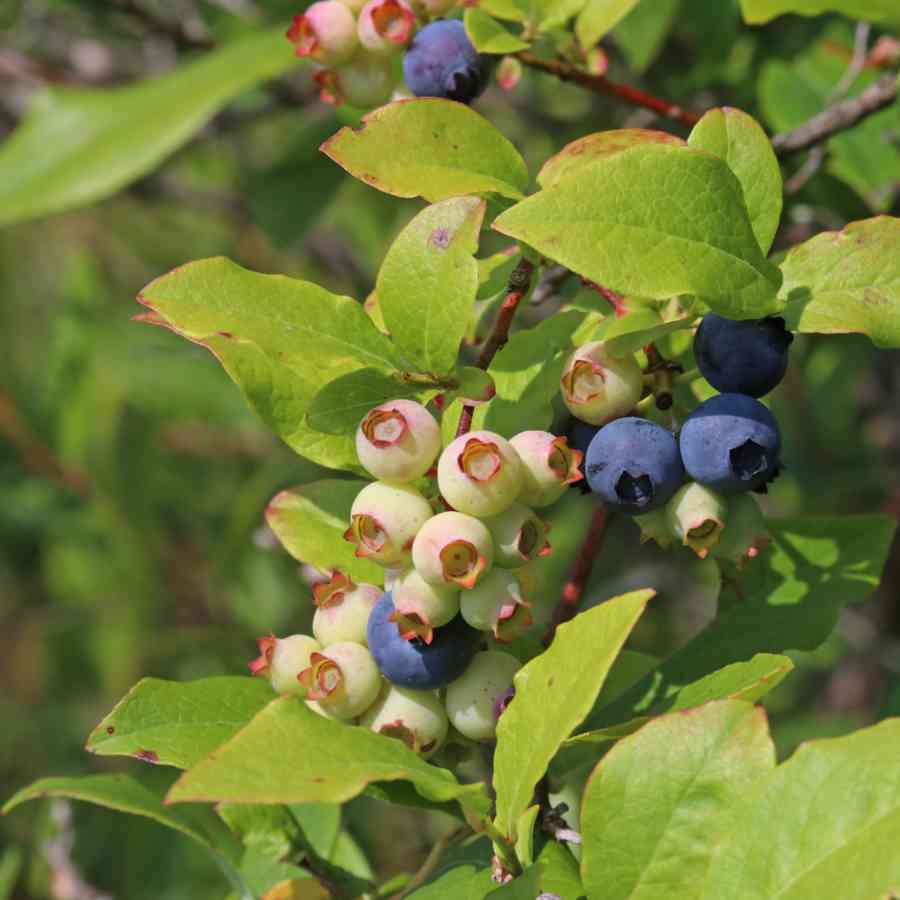
Enjoy nature and have a natural snack at the same time. Wild highbush blueberries are ripe along the Bog Trail in July.
- Photo taken by Mark Nale
The end of the boardwalk transitions to another short gravel path, then you can take the paved West Side Road back to the parking lot for a half mile loop hike. Another choice allows you to sample a little more of what the park has to offer by continuing on a short section of the Moss-Hanne Trail, taking a right onto the Indian Trail and taking another right onto the Hay Road Trail, which takes you back to the parking lot. This entire trek will make your walk over a mile. While it is an easy walk, it is not accessible.
If you go, be sure to take a short side trip off the Moss-Hanne Trail on the dead-end path to the left for another view of the bog. If you walk this additional loop in mid-May, look carefully and you should spot blooming painted trillium and pink lady’s-slippers. The Bog Trail at Black Moshannon State Park is a special place to enjoy nature any time of the year.
